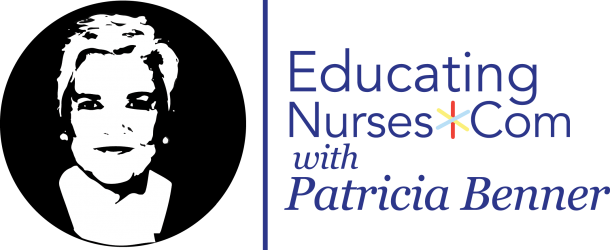By Patricia Benner, copyright 2015
Download PDF
1. University of Pennsylvania has implemented several strategies for upgrading the teaching of science so that it is more focused on the science most needed in today’s highly technical medical and nursing practice. For example, their Anatomy and Physiology class has now integrated Health Assessment with a nursing faculty member teaching the Health Assessment, and with ongoing dialogue within the class between the clinician’s use of the science in practice. Another strategy is the use of break-out seminars with unfolding clinical cases related to the biochemistry or physics being taught.
a. What other strategies can you generate to upgrade the level of science taught embedded in Clinical practice examples of using scientific knowledge?
b. How might you improve the planning of science teaching for nursing? Keep in mind that nurses often comprise 80% of the students in a class. What planning and curriculum design in your school might facilitate both the situating of science teaching in clinical practice, while upgrading the science being taught?
2. Evaluate the Anatomy and Physiology Course for its relevance to nursing practice. What areas might be short-changed? Strategize about how to collaborate with the science teacher to better tailor the course to current use of anatomy and physiology in current nursing practice. If possible present your findings to your Curriculum Committee.
a. Are the time allotments spent on different aspects of Anatomy and Physiology the most relevant for preparing nurses for practice?
b. Schools of medicine are redesigning their curricula to be more integrative, with the medical student entering clinical practice earlier and teaching more science more closely aligned with the knowledge use in practice. You might explore how the medical school associated with your campus is addressing the problem of the “old” block science and then clinical courses in medical schools. See: Cook, M, Irby, DM, O’Brien, Educating Physicians: A Call for Reform of Medical School and Residency (2010) San Francisco: Jossey-Bass and Carnegie Foundation for the Advancement of Teaching.
3. View the video of Dr. Patrick Murphy’s teaching of Pharmacology in the classroom at Seattle University School of Nursing.
a. Identify as many strategies Dr. Murphy uses to connect the student’s understanding of pharmacology in nursing practice.
b. How do the students appraise the effectiveness of the weekly “pop quizzes” for their learning the different classes of medications?

